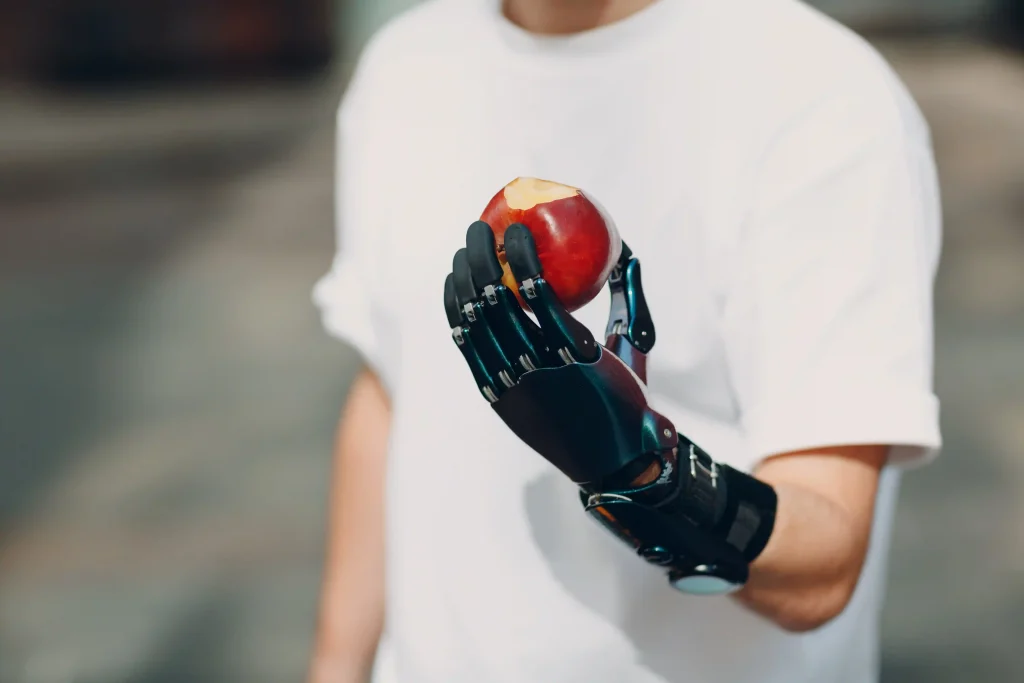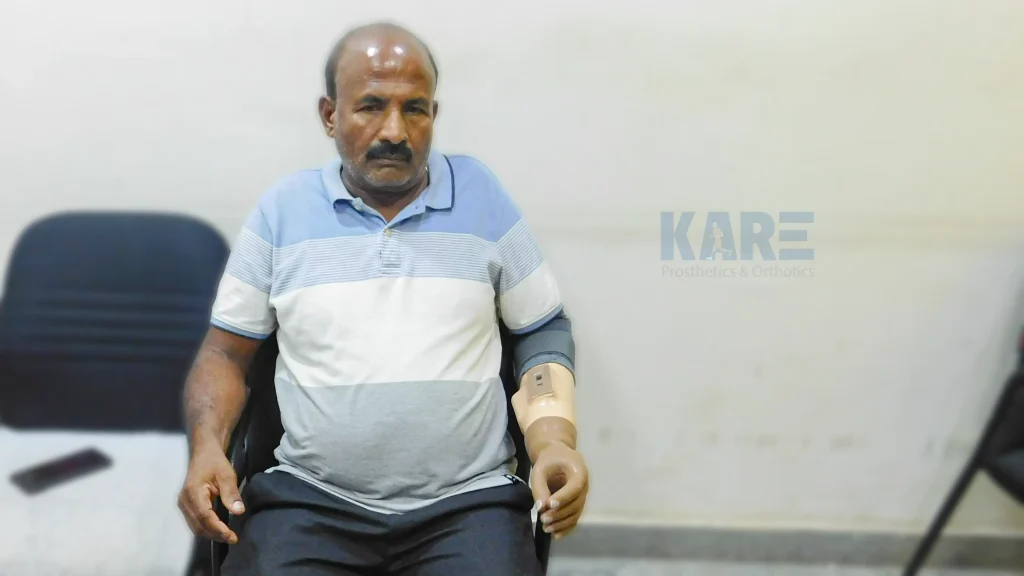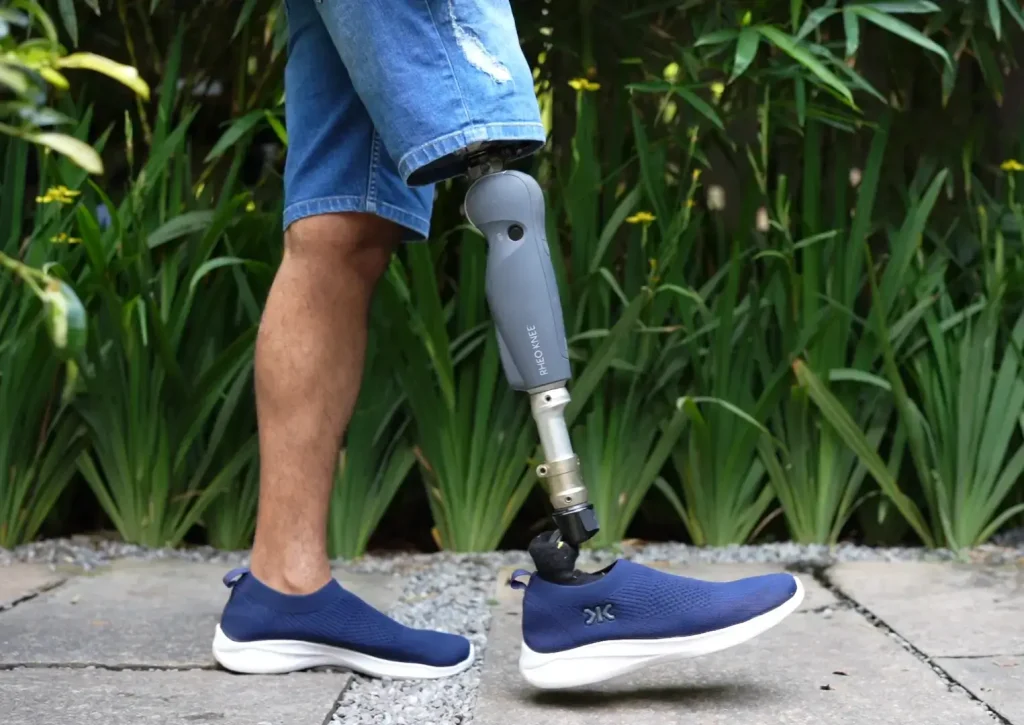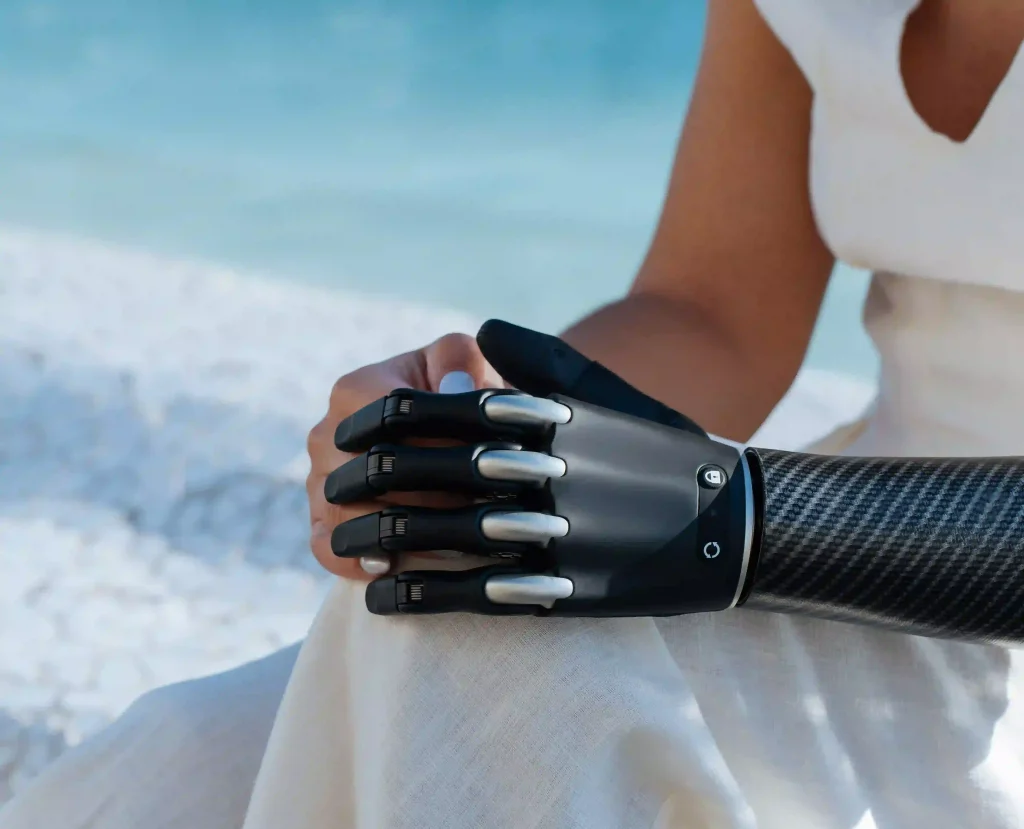Prosthetic arms are designed to mimic the movement and function of a real arm. They work in different ways depending on the type. Some are body-powered, using a system of cables and straps connected to the opposite shoulder. When you move your shoulder, the prosthetic hand or elbow moves too. Others are myoelectric, which means they have sensors that pick up signals from the muscles in your remaining limb. These signals control the movements of the artificial arm, like opening and closing the hand or bending the elbow. More advanced prosthetics may even offer a basic sense of touch through feedback systems. Every prosthetic is custom-fitted to the person for comfort, control, and better function in daily life.

When an individual experiences limb loss, it creates mental trauma and physical pain as well as loss of confidence. However, all these can be changed with prosthetic arms. An artificial hand helps individuals achieve mobility, independence, and confidence. But do you know the science behind these artificial arms? How do they work?, What types of artificial arms are available, and how much do they cost in India?
Let’s explore the science behind Prosthetic arms, various types of artificial arms, from the basic to the Advanced robotic above-knee prosthesis, and take a look at the cost in India.
What Is a Prosthetic Arm?
A prosthetic arm is an artificially manufactured limb that can take the place of a dysfunctional or amputated arm or hand following an injury, illness, or genetic condition. Artificial hands can function, imitate, and resemble a real arm thanks to advanced materials, sensors, and superior control systems.
Components of a Prosthetic Hand
- Limb: Made of lightweight, durable carbon fibre or titanium.
- Socket: Customised to fit the user’s residual limb snugly and securely.
- Suspension System: It keeps the arm in place using suction, straps, or self-suspending sockets.
- Control System: It enables motion via mechanical, electrical (myoelectric), or hybrid methods.
Types Of Prosthetic Arms
Above-knee prosthesis imitates the movements of a natural arm and hand. The technology behind the different types of arms varies:
- Cosmetic Prosthetic Arms are primarily for cosmetic purposes, that is, replicating the natural appearance of a limb without functional movement; they can improve self-esteem and body symmetry.
- Body-powered prosthetic arms utilise a harness and cable system connected to the opposite shoulder. The user can use the prosthetic by moving the shoulder. They offer durability and are low-maintenance.
- Myoelectric Prosthetic Arms or Robotic Prosthetic Arms have sensors attached on the residual limb. These detect electrical signals given from muscle contractions. These signals translate to movements of the prosthetic hand, wrist, and elbow. Myoelectric arms have better dexterity and control, enabling simple gripping to more complex tasks.
- Hybrid Prosthetic Arms is a mix of elements from body-powered and myoelectric systems elements. Thus offering functionality and control.
What are the Benefits of Prosthetic arms?
- Independence: Enables user to perform regular writing, cooking, or driving with ease.
- Functionality: The artificial limb allows stronger grips and wrist rotation for complex movements.
- Mental Well-being: Natural-like functionality, restores self-image and boosts confidence.
- Rehabilitation :Increases muscle use and adaptation.
How Do Prosthetic Arms Work?
Prosthetic arms enable individuals to hold objects, write, or even shake hands. The Artificial hand can be mechanical or advanced and high-tech. Three main types of above-knee prosthesis are available, which work through different mechanisms:
1. Body-Powered Prosthetic Arms
This type of prosthetic is controlled using your body strength. It works using cables, pulleys, and a harness that is worn over the shoulder or across the back. When the user moves their body, the wires move the prosthetic hand or hook.
A shoulder movement pulls the cable, which opens or closes the hand. Best for Users who need a low-maintenance, sturdy, and affordable solution.
Pros:
- It offers durability and has a long lifespan.
- No batteries needed
- Works well in harsh environments
Cons:
- May feel bulky or uncomfortable
- Movements are more limited and less natural.
- Takes more physical effort
2. Myoelectric Prosthetic Arms (Muscle-Controlled)
This type uses small sensors placed on your skin. Tiny electrical signals from the muscles in the residual arm or upper limb is detected by sensors. These sensors signal to the motor in the prosthetic when the user contracts a muscle, causing the hand or fingers to move.
It works when the user is tightening a muscle in the arm, and the hand on the prosthetic opens or closes. Best for individuals seeking improved mobility and a more natural appearance.
Pros:
- It has no cables or harness, making it more comfortable.
- Looks more like a real arm.
- Smoother and more precise movements.
- Some models allow different grip styles for various tasks.
Cons:
- Needs charging.
- More expensive.
- It can take time to learn and control.
- Can be sensitive to sweat or skin conditions.
3. Advanced Bionic or Neuro-Controlled Prosthetic Arms
These are the most advanced prosthetics available. They aim to connect directly to nerves or even detect signals from the brain. Some versions utilise surgical implants to pick up signals from the nervous system, enabling the user to control the arm simply by thinking about it.
If the user wants to pick up something, the arm responds like a natural arm would. Best for individuals seeking the most natural movement and who are willing to undergo surgery and training.
Pros:
- More intuitive and natural.
- May allow for feeling/sensation in the future.
- Multiple movement patterns and fine control.
Cons:
- Very expensive or limited availability.
- User may need surgery.
How Much Do Prosthetic Arms Cost in India
Now, it’s time to find out how much a prosthetic arm costs and what affects the price. The cost of Artificial hands is based on several factors. When considering the cost of artificial arms in India, we have to consider various factors.
Here’s a breakdown based on type and complexity:
1. Cosmetic Prosthetic Hands
- Primary Purpose: Increasing the aesthetic appearance.
- Primary Features: Lightweight, natural look, minimal functionality.
- Ideal for: Best for individuals who prefer appearance over function.
- Estimated Cost in India: ₹20,000–₹50,000
2. Body Powered Prosthetic Arms
- Primary purpose: These provide functional arm movement by utilising body mechanics.
- Main Features: The prosthetic offers durability and affordability with minimal maintenance.
- Use: The limb can grasp and lift objects.
- Estimated Cost in India: ₹30,000–₹1,00,000+
3. Myoelectric/Robotic Prosthetic Arms
- Primary purpose: Advanced, intuitive movement control.
- Main Features: Detects signals from muscles to move fingers, hand, wrist, and elbow.
- Suitable for: Daily tasks, hobby work such as art, gardening, playing musical instruments, and other activities.
- Estimated Cost in India: ₹1,50,000–₹10,00,000+
4. Hybrid Artificial Arms
- Primary Purpose: Blend mechanical and electrical components for versatile control.
- Main Features: Strong, basic movements and precise, delicate actions.
- Special features: Saves battery by using body power, has sensors for giving feedback.
- Suitable for users who need durability and refined control.
- Estimated cost in India: ₹1,50,000 to ₹5,00,000.
- High-End Hybrid Systems costs:₹30,00,000 or above.
📞 Call now or book a free assessment to find the best prosthetic hand that fits your lifestyle and budget.
Primary Factors That Affect Prosthetic Arm Price in India:
- Technology Used
- Amputation level (above/below elbow)
- Type of materials (carbon fibre, polymers costs more)
- Customisation & Fit
- Reputation and image of brands
- Special Features (water resistance, sensors, haptics)
- Cost of Training & Rehabilitation

Why Choose Prosthetic Arms at KARE Prosthetics & Orthotics India
KARE Prosthetics & Orthotics offers:
- Advanced robotic prosthetic arms
- Best Body-powered and cosmetic solutions
- Conducts personalised fittings
- Expert-guided rehabilitation support
KARE Prosthetics & Orthotics is here to help you make the right choice, best fittings and compassionate care.
Contact KARE Prosthetics & Orthotics today for the best solutions.
Frequently Asked Questions
The average cost of a bare cosmetic arm starts from ₹20,000 to ₹50,000, for body-powered it may be ₹30,000-₹1,00,000, for advanced myoelectric or robotic prosthetic hands, the cost can start from ₹1,50,000 to over ₹10,00,000.
Yes, you can get it from KARE Prosthetics & Orthotics that specialise in custom-made artificial hands and other reputable providers.
The adjustment depends on the type of prosthetic arm. The period can lasts from a few weeks to several months. It needs practice and therapy to achieve optimal control.
Myoelectric arms get power from rechargeable batteries, while body-powered arms get power from the muscle force transmitted through cables.
Robotic arms offer a sense of touch due to haptic feedback that can simulate a sense of pressure or temperature.
No. Individuals can adjusts after guidance, training and therapy.
Typically, the central unit of the prosthetic arm can last 5–10 years; sockets may need replacement every 3–5 years.
Final Thoughts
Prosthetic arms have developed from simple cosmetic solutions to advanced robotic systems. The amazingly advanced prosthetics can sense and respond to muscle and brain impulses. You can find simple solutions for doing daily tasks or an advanced limb for intuitive control. These custom-made artificial limbs help regain your lost movement and enhance your lifestyle.
If you know the working mechanism, types, features, and costs of these prosthetic arms, it enables you to make an informed decision.
The KARE Prosthetics & Orthotics team is committed to providing you with complete information, access to the best solutions, and compassionate care. Our experienced prosthetists team is ready to guide you through every step of getting a prosthetic arm.






